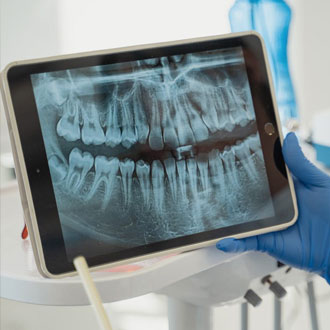When faced with the agony of a severe tooth infection or damage, deciding between dental root canal therapy and extraction is crucial for pain relief and oral health restoration. Understanding the differences, benefits, and potential outcomes of each procedure is essential to making an informed decision. Let’s delve into the details.
Root Canal Therapy
Root canal therapy, a procedure aimed at salvaging a diseased tooth, involves the removal of infected pulp from within the tooth and subsequent cleaning and sealing to prevent further infection. Conducted under local anesthesia by an endodontist, this treatment preserves the natural tooth structure.
The Procedure
-
Evaluation: Dentist assesses tooth damage and infection severity.
-
Anesthesia: Local anesthesia ensures patient comfort.
-
Access Opening: Small opening made in tooth crown.
-
Pulp Removal: Infected pulp removed from root canals.
-
Cleaning and Shaping: Root canals cleaned, shaped, and disinfected.
-
Filling: Canals filled to seal and prevent recontamination.
-
Sealing: Access opening sealed to prevent bacteria entry.
-
Restoration: Crown placed if needed for strength and appearance.
-
Follow-Up: Scheduled appointments monitor healing and success.
Advantages
-
Preservation of Natural Tooth: Root canal therapy allows you to retain your natural tooth, maintaining oral function and aesthetics.
-
High Success Rate: With modern techniques and expert care, root canals boast a high success rate, providing long-term relief.
-
Minimal Discomfort: Patients often report minimal discomfort during and after the procedure, especially compared to tooth extraction.
Recovery
Recovery from a root canal is typically swift, with minimal post-operative discomfort. Over-the-counter pain relievers may be recommended, and any sensitivity usually subsides within a few days. Follow-up visits ensure the tooth’s protection with a permanent filling or crown.
Tooth Extraction
In cases where a tooth is severely damaged beyond repair or poses a risk of spreading infection, extraction may be necessary. This procedure involves the complete removal of the affected tooth from its socket.
The Procedure
-
Evaluation: Dentist assesses tooth condition.
-
Anesthesia: Local anesthesia numbs extraction area.
-
Loosening: Tooth gently loosened within socket.
-
Extraction: Tooth removed with forceps.
-
Cleaning and Stitching: Site cleaned; stitches applied if necessary.
-
Gauze Packing: Gauze controls bleeding and promotes clotting.
-
Post-Extraction Care: Patient provided with care instructions.
-
Follow-Up: Appointments scheduled for monitoring recovery.
-
Replacement Options: Discuss options for tooth replacement if needed.
Advantages
-
Elimination of Infection: Extraction removes the source of infection, preventing further complications.
-
Immediate Relief: In cases of severe pain or extensive damage, extraction offers prompt relief from discomfort.
-
Simple Procedure: Tooth extraction is a relatively straightforward procedure, often completed in a single visit.
Considerations
-
Replacement Options: Following extraction, consideration must be given to tooth replacement options to maintain oral function and aesthetics.
-
Long-Term Costs: While initial extraction costs may be lower, long-term expenses may arise from the need for tooth replacement and associated procedures.
Recovery and Cost Comparison
Root Canal Therapy
Recovery from a root canal is typically smooth, with minimal discomfort and swift return to normal activities. Over-the-counter pain relievers may be prescribed, and follow-up visits ensure the tooth’s long-term health.
Tooth Extraction
Recovery from a tooth extraction may involve more discomfort and multiple follow-up visits. Additional procedures such as dental bridges or implants may be required to restore oral function and aesthetics.
Cost Comparison
While the upfront costs of root canal therapy may be higher, the long-term benefits outweigh the initial investment. Tooth extraction, although initially less expensive, may incur additional costs for replacement options and long-term oral health maintenance.
Choosing the Right Treatment Option
When faced with the decision between root canal therapy and tooth extraction, it’s essential to weigh the benefits, risks, and long-term implications of each option. Consulting with a qualified dental professional can provide valuable insight into the most suitable treatment for your specific needs.
Considerations to Keep in Mind
-
Oral Health Goals: Consider your long-term oral health goals and the importance of preserving natural teeth.
-
Consultation: Schedule a consultation with a trusted dental provider to discuss treatment options and address any concerns.
-
Cost-Benefit Analysis: Evaluate the costs and benefits of each procedure, factoring in long-term oral health and quality of life.
Conclusion
While the decision between best deep cleaning teeth and root canal therapy and tooth extraction may seem daunting, understanding the nuances of each treatment can empower you to make an informed choice. Root canal therapy offers the advantage of preserving your natural tooth, with minimal discomfort and long-term success. On the other hand, tooth extraction provides immediate relief from pain and infection but may require additional procedures for tooth replacement.


